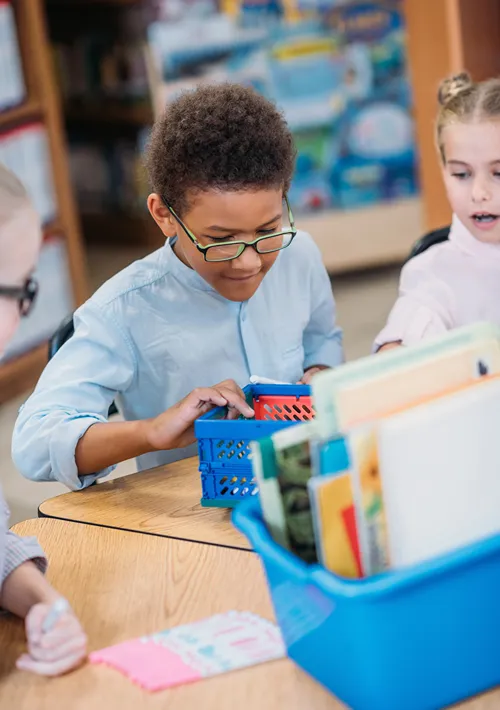Are Your Dog’s Treats Safe Around Kids? Why More Parents Are Switching to Cleaner Options
If you’re a parent and a dog owner, you already know how easily both worlds overlap. Your toddler wants to pet the dog while holding a snack, your baby crawls toward the dog bowl, or your older child loves handing out treats during playtime.
It’s sweet, and it builds a strong bond — but it also raises an important question: Are your dog’s treats actually safe to have around children? Many parents do not immediately think about this. However, traditional dog treats often contain preservatives, artificial coloring, fillers, and tricky ingredients you wouldn’t want your child to accidentally touch, or worse, taste.
As more families become conscious of what enters their homes, the shift toward cleaner pet treats has started to grow — not just for dogs, but for the kids who share the same space.
This has led parents to pay closer attention, rethink old habits, and make more mindful choices that support a safer home environment for everyone.
1. Kids Touch Everything — So What’s in Your Dog’s Treats Matters
Children, especially toddlers, interact with pets in ways adults often overlook. They hold the same toys, touch the same floor surfaces, and sometimes even try to grab treats meant for the dog. That means whatever is in your pet’s treat can easily end up on your child’s hands or toys.
Many standard dog treats contain:
- Artificial colors.
- Chemical preservatives.
- Synthetic flavors.
- Fillers like wheat or corn by-products.
- Rendered meat meals.
These ingredients may be labeled as “safe for pets,” but they are not ideal for curious children who touch, sniff, and explore everything around them. On the other hand, cleaner ingredients reduce stress for parents — especially when a treat drops on the floor, and your child gets to it first.
2. Why Many Families Are Choosing Safer, Single-Ingredient Treats
This is where the shift really starts. Parents are now choosing treats that are as close to natural as possible — ideally just one single ingredient, clearly sourced, and minimally processed.
This is why products like freeze dried dog treats have become so popular. They are simple, gentle, and easy to trust because the ingredient list is not a mystery. Clean brands like Bully Bunches offer freeze-dried options made from real meats without additives, making them safer to handle in a family setting.
When the dog drops a piece, or your child accidentally touches it, you’re dealing with something natural — not a processed biscuit full of preservatives. What parents love about these cleaner treats:
- No artificial colors that stain hands.
- No sticky residues.
- No strange chemical smells.
- No fillers that cause digestive issues in dogs.
- Clear sourcing, you can verify.
For families, transparency is everything. When both pets and kids frequently share the same environment, simple treats just make more sense.
3. Better Treats Mean Better Behavior (and Safer Interactions)
You’ve probably noticed that the quality of treats affects your dog’s behavior. High-sugar or highly processed treats can make dogs overly excited or reactive — not ideal when small children are nearby.
Cleaner treats help support calmer behavior because they:
- Provide real nutrients instead of empty fillers.
- Avoid artificial flavor enhancers that overstimulate dogs.
- Reduce digestive upset, which often affects mood.
- Support more stable energy levels.
When your dog feels good physically, they behave better — and that leads to safer interactions with children. A calm dog is less likely to jump, snatch treats, or accidentally knock a child down.
Parents also appreciate treats that break apart cleanly and do not crumble into scattered messes that little hands tend to pick up.
4. Cleaner Treats Also Support a Cleaner Home
It sounds small, but it matters: the cleaner the dog treat, the cleaner your home feels. Traditional biscuits often leave behind:
- Greasy marks.
- Artificial dye stains.
- Strong odors.
Cleaner treats lead to:
- Less residue on floors and carpets.
- Cleaner dog breath.
- Better coat health (less shedding, less dander).
- Fewer sticky handprints when kids touch the dog afterward.
Families with crawling babies especially notice the difference — because those little hands touch everything the dog touches.
Conclusion to Draw!
Dogs and kids create some of the sweetest memories together — and choosing safer, cleaner dog treats is one small step that helps keep both healthy and happy. As more parents reconsider the ingredients in their homes, switching to natural, minimally processed dog treats becomes an easy, practical choice. When you choose treats that are simple, transparent, and safe to handle, you’re not just taking better care of your dog — you’re creating a safer space for your children, too.
Related Reading
How kids learn compassion by caring for their family dog.









